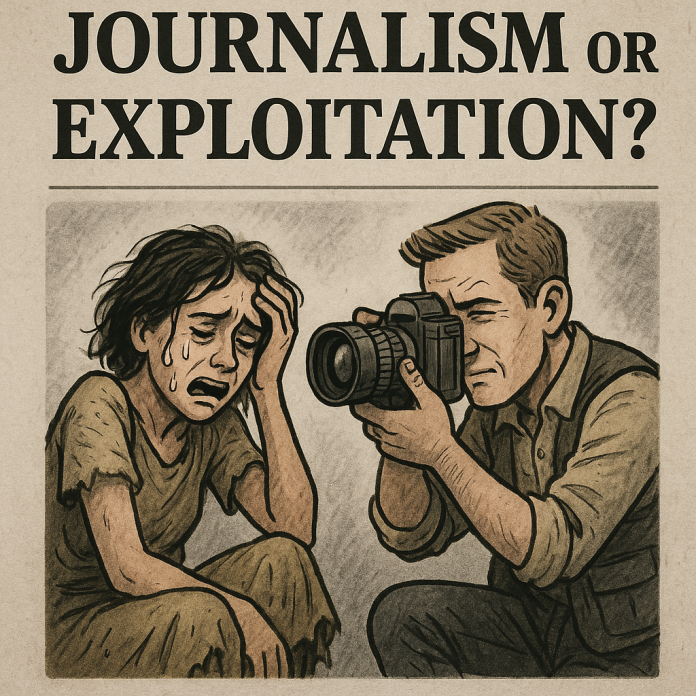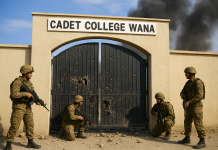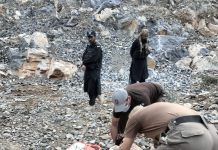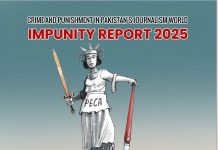The struggles of journalists in Ex-Fata
By Ashrafuddin Pirzada
For over four decades, the former Federally Administered Tribal Areas (FATA) and the Newly Merged Tribal Districts (NMTDs) have been a battleground for world power players. In this volatile region, journalism isn’t just a dangerous profession; it is a daily fight for survival, both economically and personally.
Journalists risk their lives to maintain impartial and balanced reporting, but are often denied fair pay and institutional support. So far, 19 tribal journalists have lost their lives and many have been injured on the frontline of the war theatre.
For many, journalism is no longer seen as a profession but as a passion pursued at great personal cost. Journalists in NMTDs are reduced to just a sandwich commodity between the warring fictions, where transparent and impartial reporting is almost impossible.
Rehman Wali Ihsas is from Bajaur tribal district, newly married, has to financially support his aged parents, two brothers and young sisters and wife. He has been working in journalism for over 20 years without ever earning a paycheck. Instead, to meet the family expenses, he is working in a used car showroom to support his family. Like most tribal journalists, he is forced to juggle survival with storytelling.
“When young journalism graduates ask about journalism, I tell them to look elsewhere unless they have a side-earning income source,” Rehman Wali Ihsas says.
Media houses often treat tribal reporters as unpaid marketers. Instead of offering salaries, journalists are tasked with generating advertising revenue. If they fail to meet quotas, they are quickly replaced. The loyalty and talent of these journalists are disregarded in favour of advertisements.
Rehman Wali Ihsas’ daily routine includes filing reports, taking photos, editing videos and sending stories using only a mobile phone. “We have talent but not tools, even a basic camera is beyond our reach.” He says.
Rehman Wali Ihsas and many others like him work without travel allowances, internet support or protective gear. Their professionalism is driven solely by their determination to continue reporting.
“We are called businessmen, not journalists,” Rehman Wali Ihsas laments. Many critics fail to see the sacrifices behind the work of these journalists. If they were paid properly, he believes, tribal journalists could produce stories of international calibre. However, unpaid labour has robbed them of recognition and respect.
Safeer Ahmad, a young graduate from Abdul Wali Khan University, gave five unpaid years to journalism but was unable to meet his family’s expenses. “It was my dream to become a renowned journalist with a reasonable salary to provide the best possible education and healthcare for my children,” Ahmad says. “I had to depend on my family to survive.” After facing threats due to his sensitive reports, his family urged him to quit. Today, he works in marketing in Islamabad, his dream of being a journalist quietly buried.
Muhammad Saleem, the president of the Bajaur Press Club, shares a similar experience. After eight months of reporting for Pakistan Television (PTV), he was paid only Rs. 5,000. “That broke me,” Saleem admits. He has been kidnapped twice by militants, and his releases were negotiated through jirgas. Now, he avoids reporting unless necessary.
Akmal Khan Qadri from Landikotal has worked as a journalist for 23 years but has never received an official press card. “When I’m threatened, my media house vanishes,” Qadri says. He adds that some newspapers demand “security deposits” from local reporters but offer no salary or protection in return. “They treat us like agents, not professionals.” He also points out that many of his stories are published under someone else’s name. “We risk our lives for exclusive stories, but someone else’s name gets printed,” he says. In his view, the media industry prioritizes profits over truth and tribal journalists are treated as expendable.
Hasbanullah, president of the Tribal Union of Journalists (TUJ), reveals a tragic statistic. He says since 2004, 19 tribal journalists have been killed and not a single case has seen justice. He adds that more than 200 reporters have fled the tribal areas due to threats, and several have even left the country for their safety. He says that only 1% of tribal journalists receive payment while the rest work without support or protection.
Qazi Fazlullah, a senior journalist associated with Geo Television, recalls the dangers faced by journalists in the tribal areas. He says a journalist was kidnapped and killed, and his wife and children were also murdered after they sought justice in Waziristan. He says that recently, Landikotal Press Club’s former president, Khalil Jibran Afridi, was gunned down. His family also faced threats, and they had to leave the area. “In this climate of fear, free and fair journalism is impossible,” says Fazlullah. Even stories involving the military or militants are silenced before they reach the public, he adds. Qazi Fazlullah says reporters’ life is threatened in NMTDs during the war theatre going on for the last four decades.
Despite the passage of laws like the Wage Board Award and the Protection of Journalists and Media Professionals Act in 2021, enforcement remains weak. Media watchdogs and journalist unions report that 90% of tribal journalists do not receive any income. Media houses ignore wage laws, and the government offers little more than empty rhetoric on journalist protection.
Over the past few years, Pakistan overall has seen an alarming increase in the violence against journalists, including two killings in just the last few weeks. Kamran Dawar, a digital journalist, was shot dead in North Waziristan on May 21, 2024. Just days later, Nasrullah Gadani, a journalist from Sindh, was fatally shot on May 24, 2024. These killings add to the rising death toll of journalists in the country. According to the Committee to Protect Journalists (CPJ), Pakistan has consistently ranked as one of the most dangerous countries for journalists, with a shocking number of media workers killed without justice.
In addition to physical violence, the economic hardship faced by tribal journalists continues to escalate. They are often denied proper training, equipment and access to the tools they need to perform their jobs effectively. Many are forced to use personal mobile phones to file stories, which limits their ability to work efficiently. Travel allowances and internet support are scarce, leaving them vulnerable to both physical and financial insecurity.
Despite the dire conditions, journalists in tribal areas remain determined to report the truth. However, as the dangers mount and the economic pressures increase, many are questioning how long they can continue to do so. The passion that drives them may not be enough to sustain a profession that demands so much but offers so little in return.
Pakistan’s tribal journalists face a paradox: their work is vital to democracy, but they are exploited to the core. They report from some of the most dangerous zones in the world, often without the proper resources, protection or compensation. Their stories, essential for public understanding, go untold or are buried due to fear of retaliation, financial pressures and lack of institutional support.
The situation for tribal journalists mirrors the broader challenges faced by the media in Pakistan. Despite legal frameworks meant to protect journalists, such as the Protection of Journalists and Media Professionals Act (2021), enforcement has been weak. The lack of protection for journalists, combined with economic hardship and constant threats to their safety, has created an environment where free journalism is increasingly difficult to sustain.
The tragic deaths of Kamran Dawar, Khalil Jibran Afridi, Nasrullah Gadani and the rest of the other journalists are only the latest in a long line of attacks on journalists in Pakistan. In recent years, the number of journalists killed has risen steadily, with most of these crimes going unpunished. The rising violence against journalists, coupled with the economic exploitation they face, paints a bleak picture of the future of journalism in Pakistan, especially in the tribal areas.
As Pakistan’s media landscape continues to shrink under threats, harassment and censorship, it remains unclear how much longer journalists can continue to work under such dire conditions.
For now, passion may be the only thing keeping many of these journalists going, but it is not a sustainable solution.
Ashrafuddin Pirzada
Freelance Journalist &
Social Worker/Activist











